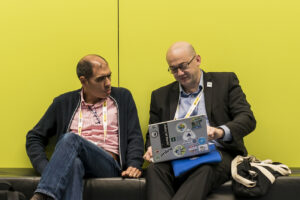Internet forms part of our daily life and is often the place where much of our information comes from, be it the websites we view, social media or news items sent to us via WhatsApp by our friends and family.
This volume of information and the speed at which it circulates means information which has not previously been substantiated is understood to be true. To avoid getting led up the garden path and be able to stop this sort of information from circulating, here are some tools to help you spot that dreaded fake news.
Check information with different sources
The most immediate way of finding out if information is reliable or not is to compare it on different media or check it directly with the source cited in the news item. Some journalists have also set up initiatives such as Verificat, a website for cross-checking social media content on politics or relating to Covid-19 and other topics of public interest.
Check the veracity of the images
To check the real origin of a photo you can use reverse image searching tools such as Labnol and TinEye. All you need to do is upload the image you have your doubts about and introduce the URL. If the image belongs to another piece of information you will see the original publication and be able to see what it actually refers to. If it does not appear, this is a good sign as it means it does not belong to information published elsewhere in the past.
Another tool for those with a Sherlock Holmes inside them is the app Historical Weather, which you can use to check what the weather was like at the time and place the photo was supposedly taken. If the photo shows a radiant sun and Historical Weather tells you that it was raining all day in the place the photo was taken, it means somebody’s misleading you with that image.
If the news item comes with a video, you can verify it with InVid, a tool developed with European funding and which works as an extension to your browser. The app allows you to introduce the link to the video and shows you the information relating to it (when it was uploaded, a description, the channel where it is housed etc.). Those with more expertise can even manage to detect if the video has been manipulated by checking the consistency of the images.
If with all these tools you still have your doubts as to whether information is true or not, the best thing is not to share it and help stop the circulation of potential fake news that way.


